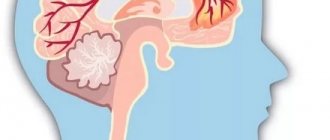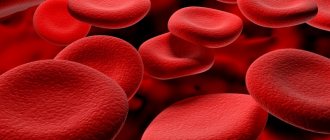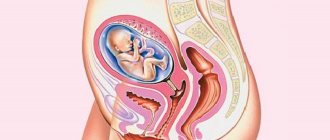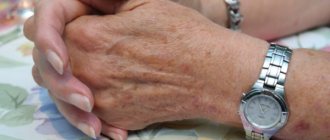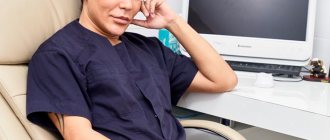Many of us cannot travel safely in public transport. People begin to feel unwell, nausea and headaches appear. This condition has a scientific name - kinetosis. People call it motion sickness. You can’t call it a disease, it’s just that in some people this is how the body reacts to movement. Our vestibular apparatus is very sensitive. And it is configured in such a way that it reacts to horizontal acceleration.
It turns out that it is not ready to move along a vertical plane. This is why when moving fast on a bus, ship, or plane, you begin to feel very dizzy and feel sick. It also makes people sick if their movements change suddenly. That is, the speed increased - brake - acceleration again. This often happens when driving a car.
What is the cause of motion sickness?
During monotonous movement in a car, a person experiences a mismatch between the vestibular apparatus and the visual analyzer. The eyes see flashing objects, but the muscles are at rest. So different senses send conflicting signals to the brain, and the brain does not understand what is really happening.
There is an assumption that in this case the brain believes that the person has begun to hallucinate. He associates this with the fact that some poison has entered the body, which must be gotten rid of. That's why the urge to vomit occurs.
People experience this situation differently: those whose vestibular apparatus works better experience it normally. But there are also those who are predisposed to motion sickness.

Across the seas, along the waves... How to avoid motion sickness Read more
If kinetosis finds you on the way
If, despite all your tricks, it was not possible to avoid motion sickness, we will give some recommendations on how to reduce the consequences of this unpleasant condition in every sense. So, what to do if you feel sick in the car:
- A proven remedy for an attack of nausea is ascorbic acid (also known as vitamin C). The action of this drug is based on blocking the body's synthesis of histamine. If you are not satisfied with AK in tablet form, a lot of the necessary vitamin C is found in lemon, green apple, and mint tea;
- ginger also has a pronounced anti-sickness effect; it is not without reason that it is a mandatory attribute of the menu on airplanes. It is acceptable to take it in any form - cookies, lollipops, lozenges, or even in powder form;
- with kinetosis, the vestibular apparatus is in a deceived state under the influence of external factors. You can try to return it to normal by moving your feet. Shifting from toe to heel and vice versa has the same effect, although the latter exercise is more inconvenient to perform in a car seat. The essence of the method is to reduce the degree of discrepancy between signals received by the central nervous system from the periphery. To be more specific, in this way you make your brain believe that the landscape outside the window is changing, but you yourself are supposedly in motion;
- if the condition worsens further, you should stop the car, lie down on the ground (or back seat) and close your eyes. It would be nice to fall asleep, but on a long journey a long stop is most often an unacceptable luxury.
There are also quite exotic ways of what to do if you get very motion sick in the car. We will not strongly recommend their use, except as an experiment. Anyway, they seem harmless enough:
- Chinese medicine believes that the wrist contains acupuncture points that are associated with nausea. Wearing an elastic bandage on your wrists can reduce the urge to vomit;
- Another tip from the same category is to place several toothpicks (matches) in your teeth and chew them slowly during the trip. Perhaps the effect of this method is based on the placebo principle. However, no one forbids chewing or sucking something else and more edible - for example, mint candies.
Another effective way is to simply sit in the front seat. In many cases, this is enough for the unpleasant symptoms to disappear.
There is also an opinion that the vestibular apparatus can be trained. For example, on a swing. However, a busy adult usually doesn’t have enough time for such little things.
What should you do before your trip?
People who are susceptible to car sickness can help protect themselves when traveling by being prepared.
Firstly, you need to avoid both traveling on a full and empty stomach. The best option is a light snack 1.5–2 hours before departure. You should avoid sweet, spicy, fatty foods, soda and alcohol.
Secondly, you can take a special drug that prevents the symptoms of motion sickness. The most commonly used drugs are antihistamines, which dull the senses in the inner ear that sense movement. It is important to note that such tablets make a person drowsy and affect driving ability. Before taking them, you need to carefully study the instructions, and it is better to consult a doctor.
There are also special anti-motion sickness patches that need to be applied in advance before the trip. Bracelets that work on the principle of acupuncture are also popular, i.e. impact on special points of the body.
Article on the topic
Are you seasick? 5 ways to avoid seasickness
What to do when motion sickness occurs
To avoid motion sickness, before getting into transport, follow these simple rules:
- don't eat heavy food. Also refrain from fatty, salty, spicy and smoked foods. The fact is that all this affects gastric motility. Enzymes are produced, which lead to nausea and vomiting;
- Before your trip, eat fruit about three hours before your trip. You can also eat crackers. Buy healthy yogurt, just not fatty;
- Don't get into the car hungry. On an empty stomach you may feel more nauseous;
- It’s good to fight thirst with water or tea. Brew weak tea, and the water should be without gases. Alcoholic drinks and soda are contraindicated;
- use special anti-motion sickness products. But you don't need to drink them in advance. Take it on the go and use it as needed;
- if you have to travel by ship, a special patch will help. It contains scopolamine and is attached behind the ear. Apply it seven hours before your trip and the load on the vestibular apparatus will be significantly reduced. This patch is sold at the pharmacy with a prescription.

How to prevent motion sickness while traveling?
It is important for motion sickness sufferers to take the correct seat in the car. On the bus, it is better to sit as close to the driver’s seat as possible, always facing the direction of travel. In a passenger car, it is recommended to take a seat in the front seat next to the driver.
While moving, you need to fix your gaze. On the road, you should not read or watch the flickering of objects outside the windows - it is safer to focus on a stationary object in the distance. You can also simply close your eyes and tilt your head back slightly. If it works out, then you can sleep.
It is important to ensure a constant flow of fresh air during the trip, so you need to open the window periodically. If your health worsens, you should begin to take deep, rhythmic inhalations and exhalations (8–10 times per minute).
If the path is long, then you need to make stops and go outside. You should stretch your legs, walk a little or sit on a bench.
When motion sickness occurs, tablets will help, as well as a cold compress that should be applied to the face and neck.
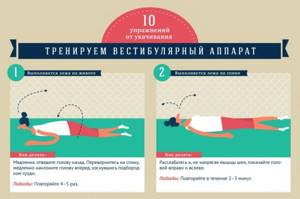
Training the vestibular apparatus: 10 exercises against motion sickness Read more
What to do before and during the trip if you get motion sickness on the bus
Preparing for a long trip is one of the most exciting moments. You happily buy tickets, skip and pack your suitcase, and imagine pleasant moments from your upcoming trip. But there is one thing that can overshadow even the most inveterate optimist: motion sickness. Many people actually get motion sickness in transport, and this is not just a feature of the body. This phenomenon creates a real inconvenience on the road, and something needs to be done about it. If you are one of the people who is at risk of motion sickness in transport, try to take certain measures before setting off.

It's all about our vestibular apparatus. It is part of the central nervous system and allows a person to adequately assess his position in space. The vestibular apparatus is located in the ear. If you are curious why we get motion sickness in principle, then here is the answer: when the vestibular apparatus is overly stimulated (we cannot find a foothold - we are shocked the whole way, and at the same time houses and cars outside the window flash very quickly before our eyes) , a number of reactions are triggered in the brain, including the gag reflex. As a result, complete motion sickness occurs in transport. You can resist it, for example, by training the body. If traveling on a bus is on your nose, and your body is not yet trained, or the tendency to motion sickness is inherent in you at the genetic level, use some methods that should help avoid vomiting and even nausea.
What to do before your trip if you know for sure that you get motion sickness on the bus
- Space in the cabin. When buying bus tickets, take seats closer to the driver. Usually, motion sickness is stronger in the rear of the vehicle, so the front of the bus is the optimal place when you feel sick on the road. If the bus has not only normally located seats, but also those in which you will have to sit with your back to the traffic, choose only the seats that are usually located. Your body should be in the most familiar conditions for it.
- Food. You should not set off on the road either hungry or when you have eaten too much. Try to eat 2-3 hours before departure. It is advisable not to eat fatty, fried or any other food that is difficult for the stomach. Let it be a light snack. Also, refrain from drinking alcohol the day before - you don’t know how your body will behave when it has to cope with a hangover and at the same time adapt to unusual conditions in transport.
- Dream. Getting enough sleep is useful not only before a long trip, but also in general - to be in good shape, to have energy, so that the brain functions correctly. However, it is critically important to get enough sleep before traveling by bus, because lack of sleep provokes nausea and makes you feel even more motion sick.
- Coffee with milk. In principle, you shouldn’t drink coffee on the road or even before leaving, much less coffee with milk. Firstly, coffee itself irritates the gastric mucosa, which causes nausea. Secondly, milk and other dairy products behave unpredictably, even out of the blue causing stomach upset and nausea. Do you want to take that much risk?
- Pharmacy. Before leaving, go to the pharmacy and ask: what to do if you get motion sickness in transport? Surely you will be offered to buy medications (including herbal ones) that should help cope with the signs of motion sickness. Perhaps you have already encountered the side effect of long journeys by bus and now you know which pills will save you. Or maybe your parents and friends will tell you the best remedies. Take note of their recommendations, but still consult a pharmacy about how to cope with motion sickness.
The best methods to combat motion sickness
Situation: you are already sick on the bus. What to do? If you feel like you are “floating,” give up any activities that irritate your brain: reading, playing games on your smartphone, or even watching a movie on your tablet. The maximum you can afford is listening to music. This will not save you greatly from motion sickness in transport, but giving up the need to focus your gaze on small, fast-moving objects will even out the situation.
Don’t get hung up on thoughts about why you get so sick on the bus or what to do if you’re about to throw up. Think about something pleasant, get distracted by a conversation with your fellow travelers, talk to the flight attendant, asking her about the sights of the city you are going to. And look into the distance, forward, preferably through the driver’s window. This way you will avoid the rapid flashing of small objects and will be focused on a static point in front.
Provide yourself with access to clean, fresh air. Stuffiness is the best friend of nausea and vomiting, so open the window or hatch above the passage and turn on the air conditioner. If it’s completely unbearable, ask the driver to make a forced stop. Ask once, but you will save your situation, perhaps wash your face with cold water, breathe some air, and you will feel better.
Counter the urge to vomit with the taste of mint gum or candy. Any other taste (for example, sweet) will not work; only mint can ease the severity of nausea. Yes, this looks like a folk remedy for nausea and motion sickness, but it is effective. You can also include a slice of lemon here (cut the lemon or orange into slices in advance and take them on the road) and even pickles. The taste of pickled cucumbers interrupts gag reflexes; you can also put them in a jar or food container and start eating when you feel nauseous.
What else to do when you feel sick on the bus? TOP 5 methods, including folk ones
1. Drink clean water or tea. You can even chew the tea leaves, because it is relatively neutral in taste, and most importantly, not sweet, which will help resist the onset of nausea.
2. If possible, apply a towel soaked in cold water to your forehead and back of your head. It should cheer you up a little and give you strength. A little self-massage of the palms, wrists, and ears also helps.
3. Wrap elastic bandages around your wrists. They will create a pressure difference, which in turn will reduce the likelihood of nausea.
4. Here’s another recommendation from the “grandmother’s advice” category: before leaving, hold a toothpick or an ordinary match in your teeth. Constant chewing will distract you from bad thoughts about being sick on the bus. We cannot vouch for the effectiveness of this folk method, but remember, you have probably seen people chewing a match in transport more than once. Most likely, there is definitely something in it.
5. As in covering the navel with a plaster. Just don't laugh. This method is also used (which you won’t do in order to avoid vomiting in the cabin, including believing in the miraculousness of the navel patch) when the question arises - how to get rid of nausea on the bus. The main thing is to stick the patch on the navel crosswise and hope for a miracle.
And in order not to rely entirely on chance and providence, try to stock up on anti-nausea pills, take something sour with you, and water.
ventilate the cabin or turn on the air conditioning above your seat and, of course, enjoy the trip. Other articles
What foods help with motion sickness?
To prevent motion sickness while moving, you need to drink more, since it is more difficult for a dehydrated body to cope with this condition. It is better to drink juice, tea or mineral water without gas.
Peppermint helps fight nausea. You can make an infusion, chew the leaves, or suck on mint candies.
A good remedy is lemon. You can acidify water with it, add it to tea, or simply hold lemon slices in your mouth.
Article on the topic
Useful tricks. How to deal with motion sickness of a child in transport?
Ginger will also help cope with motion sickness syndrome. It is added to tea and used in powder form in capsules. If there are no problems with the gastrointestinal tract, then you can simply gnaw on a small piece of fresh ginger root throughout the trip or chew candied slices of this plant.
